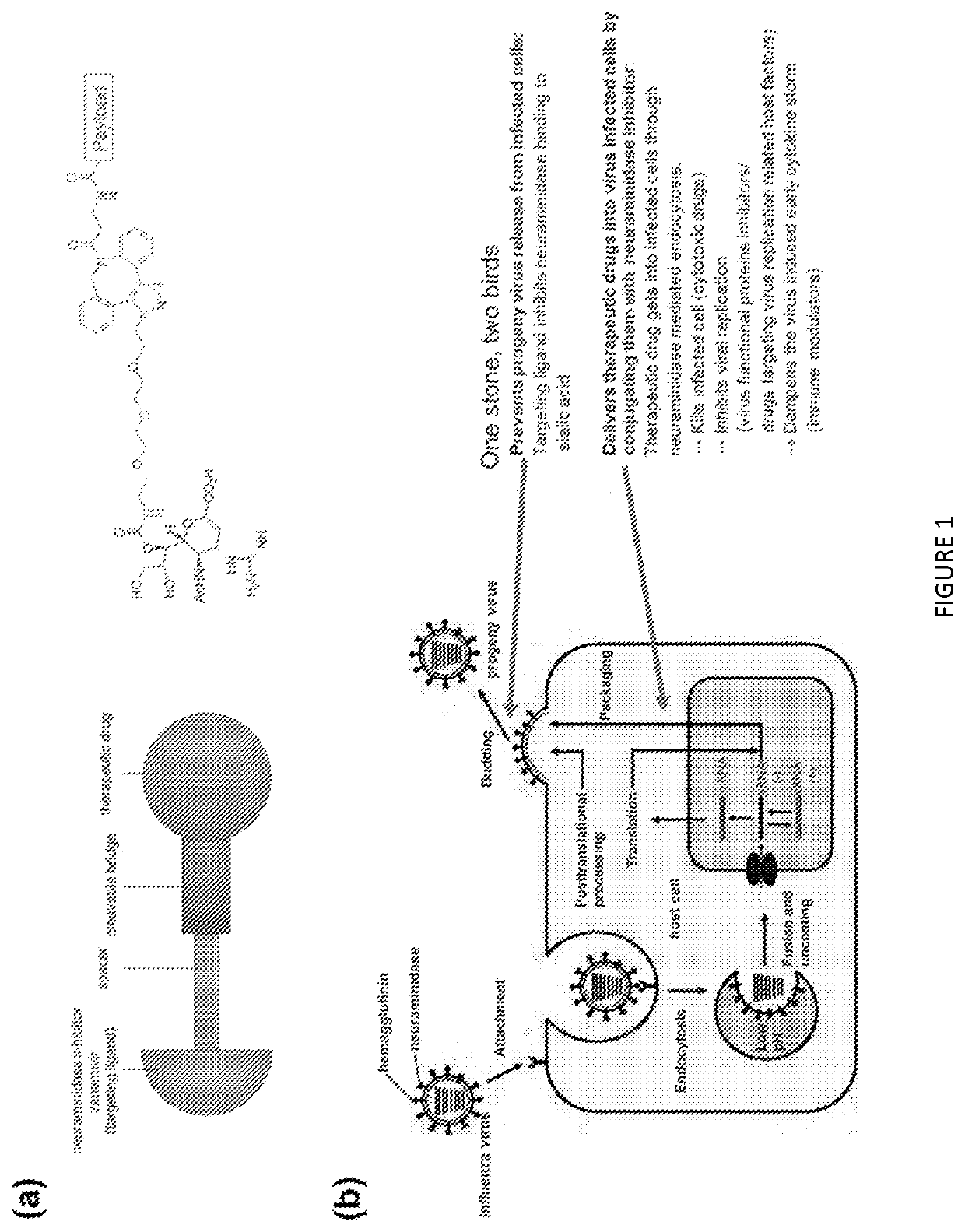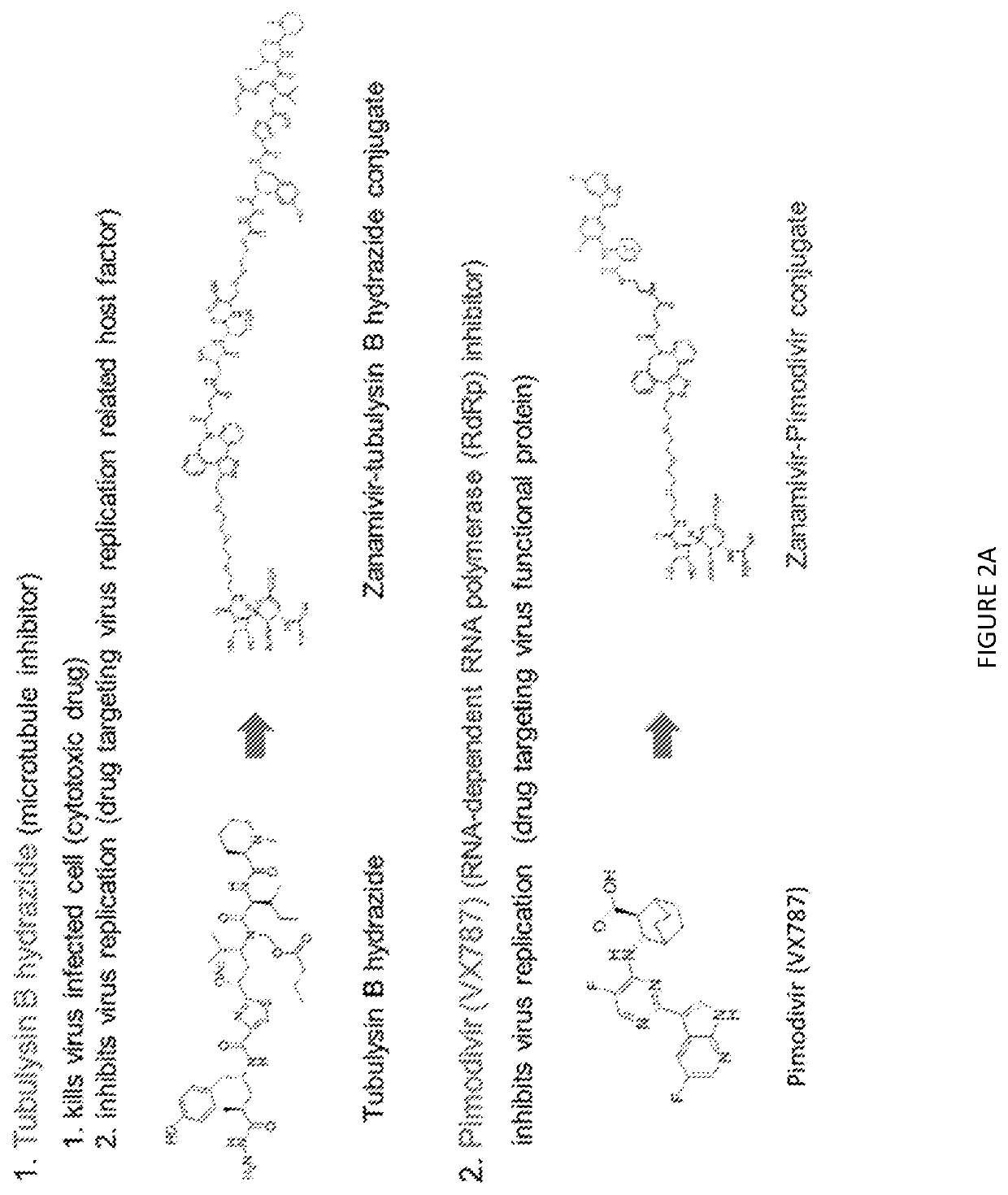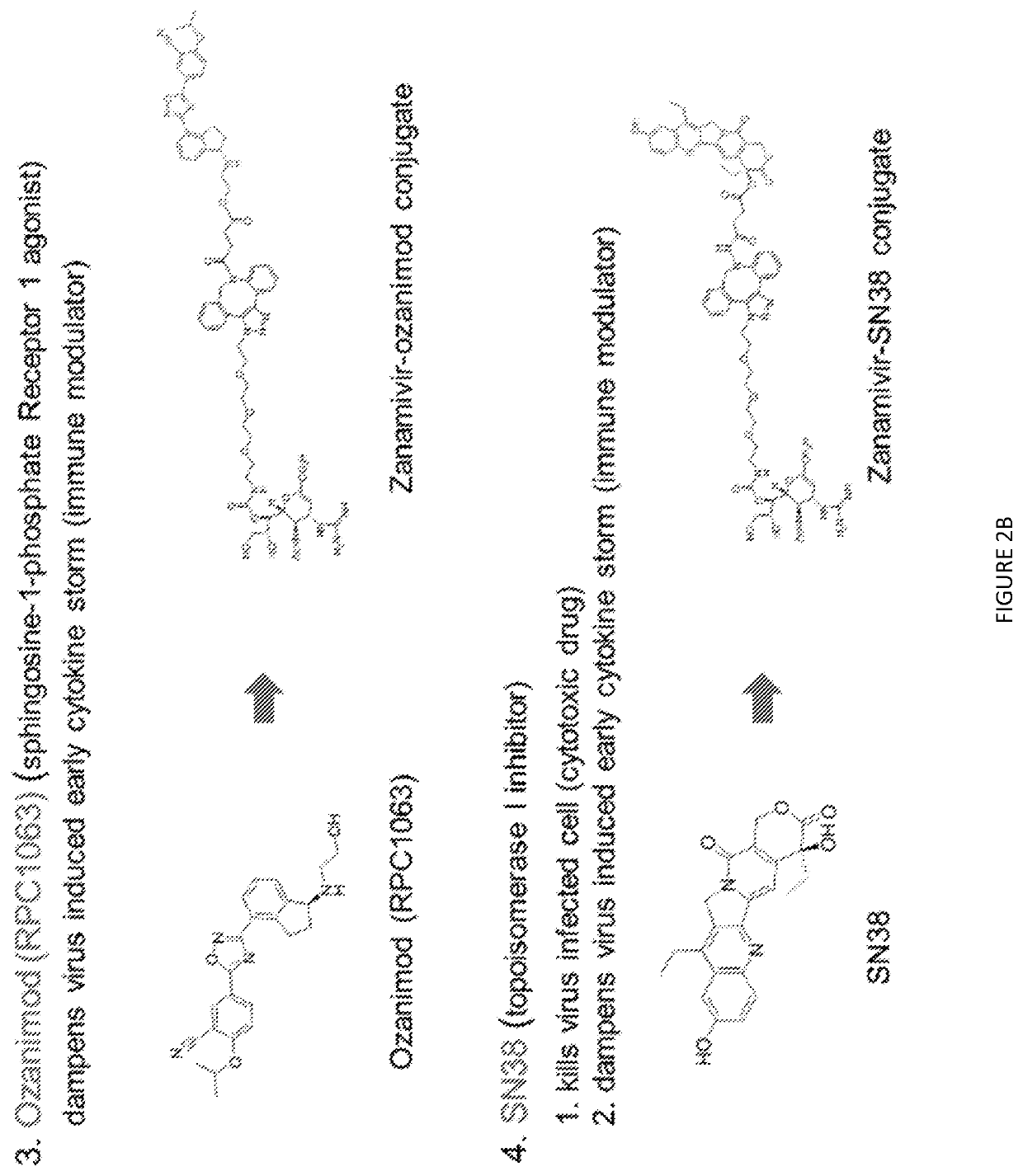Small molecule ligand-targeted drug conjugates for Anti-influenza chemotherapy and immunotherapy
a small molecule, immunotherapy technology, applied in the direction of antivirals, radioactive preparation carriers, organic chemistry, etc., can solve the problems of drug resistance problems in the class of antivirals, impose a substantial social economic burden arising from productivity loss, and many vaccines become ineffective against mutating strains. , to achieve the effect of high binding affinity and cure the infection
- Summary
- Abstract
- Description
- Claims
- Application Information
AI Technical Summary
Benefits of technology
Problems solved by technology
Method used
Image
Examples
example 1
the Targeting Ligand
[0098]Influenza neuraminidase (NA) is a transmembrane glycoprotein anchored in the lipid raft domain of influenza virus envelope. NA accounts for 20% (about 80) of the membrane glycoproteins and the head of NA is a homo-tetramer. It assists in the release of progeny virus from the infected cells by cleaving sialic acids from membrane glycoproteins or glycolipids (In the virus budding process, influenza virus hemagglutinin can bind to sialic acid receptors on the host cell membrane, which hinders the release of newly formed virus).9 Since neuraminidases are expressed on both the influenza virus surface and the surface of infected cell membrane, it was selected by our group as the potential target for the design of targeting ligand to target influenza virus and virus infected cells.
[0099]To date, four neuraminidase inhibitors have been developed as anti-influenza drugs: oseltamivir (Tamiflu; Glide / Roche), zanamivir (Relenza; GlaxoSmithKline), peramivir (Rapivab; Bi...
example 2
Synthesis
[0100]
example 3
ecule Ligand-Targeted Drug Conjugates for Anti-Influenza Chemotherapy
In Vitro Binding to Influenza Virus Infected MDCK Cells
[0101](1) Confocal Microscope Study with Zanamivir-Rhodamine Conjugate
[0102]Method: MDCK cells were seeded in confocal plates and incubated overnight. In the next day when the cells reached 80% confluence, they were infected with 100 TCID50 influenza virus A / Puerto Rico / 8 / 34 (H1N1). On the third day, the infected MDCK cells were incubated with 50 nM zanamivir-rhodamine conjugate in the presence or absence of 5 μM zanamivr. After incubated for 1 h at 37° C., the cells were washed with the cell culture medium and sent to the confocal micro scope.
[0103]As shown in FIG. 6a, a strong fluorescent signal is observed when influenza virus infected MDCK cells were incubated with 50 nM zanamivir-rhodamine conjugate. The fluorescent emission signal disappears when the binding of zanamivir-rhodamine conjugate to neuraminidase is competed by 100 fold excess of zanamivir (FIG...
PUM
| Property | Measurement | Unit |
|---|---|---|
| time | aaaaa | aaaaa |
| diameter | aaaaa | aaaaa |
| acid | aaaaa | aaaaa |
Abstract
Description
Claims
Application Information
 Login to View More
Login to View More - R&D
- Intellectual Property
- Life Sciences
- Materials
- Tech Scout
- Unparalleled Data Quality
- Higher Quality Content
- 60% Fewer Hallucinations
Browse by: Latest US Patents, China's latest patents, Technical Efficacy Thesaurus, Application Domain, Technology Topic, Popular Technical Reports.
© 2025 PatSnap. All rights reserved.Legal|Privacy policy|Modern Slavery Act Transparency Statement|Sitemap|About US| Contact US: help@patsnap.com



